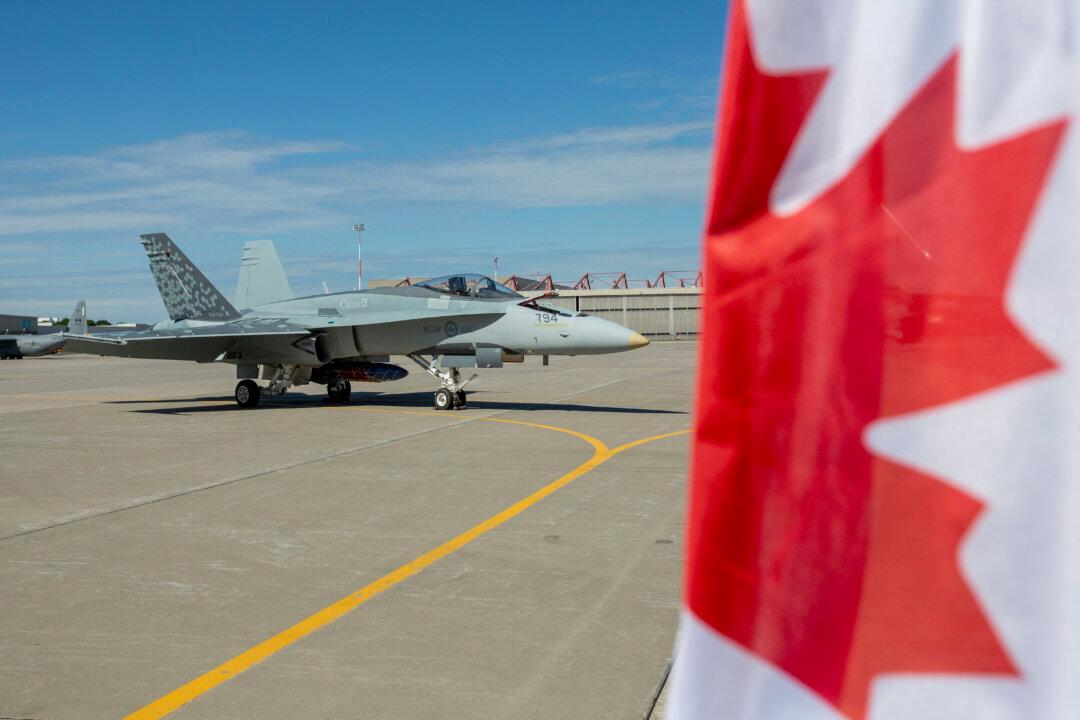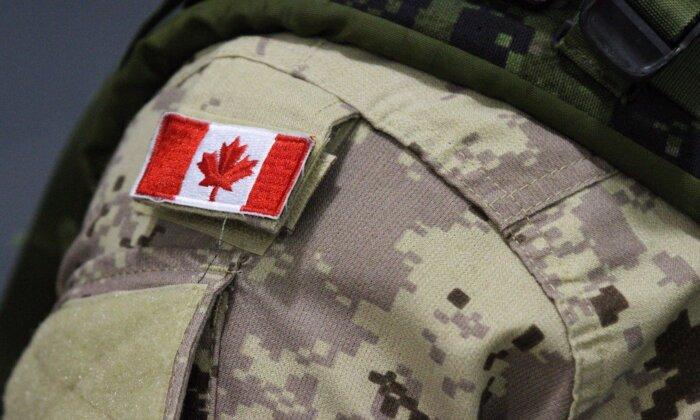Canada’s contributions to NATO have historically been the hallmark of a reliable ally. For decades, Canadians saw their country as a cornerstone of transatlantic security and continental defense, not only because of geographic location but also because of a deep-seated belief in the principles of collective security and deterrence.
However, as NATO has navigated the end of the Cold War, counterterrorism campaigns, and a resurgent great-power competition, Canada’s commitment has waned. Canada, once a primary supporter of NATO, now finds itself marginalized within the alliance, contributing little in resources or capacity to the North Atlantic and North American defense. This shift reveals a critical gap in Canada’s defense policy and threatens to undermine the security of both NATO and Canada itself.
Canada’s NATO legacy traces back to its founding in 1949. During the Cold War, Canada’s contributions were instrumental in NATO’s efforts to maintain security in Europe and North America. Canadian troops were stationed across Europe, serving as a bulwark against Soviet aggression. The government stationed forces in Germany, joining U.S. and European allies in positioning a formidable deterrent against the Warsaw Pact. In the air, Canadian squadrons flew routine patrols, defending NATO airspace and conducting surveillance missions across the European continent. The Canadian Navy, while smaller than its U.S. and British counterparts, patrolled the Atlantic, securing vital shipping lanes and bolstering NATO’s maritime presence.
These contributions were tangible and respected. Canada was recognized as a “middle power” that did not merely participate but actively shaped NATO strategy and operations. Canada’s participation was never limited to the land, sea, and air theaters; the North American Aerospace Defense Command (NORAD) represented Canada’s commitment to continental security, solidifying the Canada–U.S. partnership and adding a layer of defense for the broader alliance. The success of these commitments validated Canada’s image as a dependable NATO ally.
The end of the Cold War marked a turning point in Canada’s defense posture. When the Berlin Wall fell, Canada, like much of the Western alliance, reconsidered its military spending and defense commitments, seizing on a perceived “peace dividend” that justified cuts to defense budgets and troop levels. While Canada remained involved in NATO operations throughout the 1990s, participating in missions in the Balkans and later in Afghanistan, its role and contributions began to change. The Canadian Armed Forces experienced significant reductions, as defense budgets declined, and many capabilities were either scaled back or phased out.
Canada’s commitment shifted from large, ongoing deployments to smaller, often reactive contributions. Although Canada’s presence in the Balkans demonstrated a willingness to support NATO operations, this engagement came with notable limitations in capacity. The shrinking budget left Canada ill-prepared to maintain the same scale of deployment it had during the Cold War, eroding its ability to respond flexibly and robustly to crises within NATO’s operating areas.
In Afghanistan, Canada’s contributions were meaningful but came at the expense of sustaining other capabilities. Canadian forces in Kandahar, tasked with one of NATO’s most challenging counterinsurgency missions, showcased the professionalism and bravery of the Canadian Armed Forces. Yet, despite the commitment shown by its troops, Canada’s shrinking defense resources meant that this was one of its last significant deployments, and it came with real costs to Canadian force structure and readiness. The concentration of forces in one theater, combined with limited procurement and a lack of sustained investment, left the Canadian military stretched thin.
Canada’s government, following the end of the Afghanistan mission, displayed a pattern of rhetorical commitment to NATO that was seldom matched by substantive investments in defense. The assumption that Canada could continue to play a supporting role without bolstering its force structure, modernizing equipment, or adapting to NATO’s evolving needs reflected a misalignment between Canadian foreign policy rhetoric and its actual defense posture.
Under Prime Minister Justin Trudeau, Canada’s NATO obligations have come under scrutiny and criticism, not least from allies who increasingly view Canada as an ally unwilling to meet its responsibilities. While Trudeau has often emphasized Canada’s dedication to NATO and the principles of collective security, the Canadian government’s approach to defense spending and military procurement tells a different story. Trudeau’s government has consistently fallen short of NATO’s defense spending target of 2 percent of GDP, with Canada hovering closer to 1.3 percent.
The gap between rhetoric and reality has only widened under the Trudeau administration, as Canada’s actual capabilities have stagnated or declined. This failure to meet the 2 percent threshold is not simply a matter of optics, but a tangible reduction in Canada’s ability to contribute meaningfully to NATO’s deterrence and defense posture.
The procurement challenges facing Canada are symptomatic of a deeper issue: a lack of political will to prioritize defense, even as threats evolve and NATO’s security environment becomes increasingly complex. Canada’s procurement processes have been mired in delays, bureaucratic bottlenecks, and budget overruns, resulting in an armed forces structure that struggles to meet modern demands. The long-delayed replacement of Canada’s aging CF-18 fighter jets with F-35s is emblematic of these challenges. While progress has been made, it has come too slowly, leaving Canada at a disadvantage in maintaining air superiority capabilities alongside its NATO allies.
Additionally, Canada’s plans to expand its naval fleet, including the acquisition of new submarines, have suffered from repeated setbacks. Submarines are a critical asset for patrolling the North Atlantic and Arctic, two areas that hold increasing importance in NATO’s strategic calculus as Russia asserts itself in these regions. Yet Canada has failed to build or procure a fleet capable of securing these waters, casting doubt on its ability to contribute to North Atlantic and Arctic security.
Canada’s defense shortfalls are not just about equipment but also about a lack of infrastructure and readiness, especially in the Arctic. The Arctic has become a focal point of great-power competition, as climate change opens new maritime routes and resources. For Canada, an Arctic nation, maintaining a strong presence in the region is vital not only for its sovereignty but also for NATO’s strategic posture in the face of an assertive Russia and a globally ambitious China. Yet Canada’s Arctic defense infrastructure remains underdeveloped.
While other Arctic nations, including Norway and the United States, have enhanced their Arctic capabilities, Canada has lagged behind. This is despite the emphasis on sovereignty and defense in “Our North, Strong and Free,” Canada’s own strategy document, which calls for a robust presence to protect Arctic interests. However, investments in Arctic-capable ships, airfields, and surveillance systems have been piecemeal, insufficient to meet the demands of a rapidly changing security environment. Canada’s limited ability to project power and maintain situational awareness in the Arctic further underscores its diminished role within NATO.
To regain its position as a meaningful NATO ally, Canada must make substantial changes. The first step is to increase defense spending to meet or exceed NATO’s 2 percent target. This is more than a symbolic gesture; it is a necessary investment to restore Canada’s ability to contribute meaningfully to collective defense. Canada should prioritize spending on capabilities that directly support NATO’s needs in the North Atlantic and Arctic. This includes bolstering the Royal Canadian Navy with modern submarines, enhancing Arctic surveillance capabilities, and ensuring that the Royal Canadian Air Force is equipped with advanced fighter jets and maritime patrol aircraft.
Reforming Canada’s defense procurement process is another essential step. Canada’s current system is plagued by inefficiencies, which result in lengthy delays and cost overruns that waste resources and hinder force readiness. Streamlining this process would enable Canada to acquire critical equipment faster and more efficiently, allowing it to respond more effectively to NATO’s evolving requirements. Recent moves to revamp the procurement process show promise, but these efforts must be sustained and expanded if Canada is to overcome its reputation as a NATO laggard.
Canada’s defense policy should also focus on strengthening its partnerships with key NATO allies. Enhanced cooperation with the United States, the UK, and other North Atlantic allies is essential for Canada to regain its footing in NATO. This can be achieved through increased joint training, intelligence-sharing, and collaborative infrastructure projects, especially in the Arctic, where allied presence is needed to counterbalance Russia’s military buildup.
Finally, Canada must redefine its defense priorities to align more closely with NATO’s strategic needs. Canada’s focus should be on securing the North Atlantic and the Arctic, where its geographic position offers a unique advantage. A renewed emphasis on Arctic and North Atlantic security would demonstrate Canada’s commitment to NATO and reestablish it as a responsible stakeholder in regional security. This approach would allow Canada to play to its strengths and contribute in areas where its capabilities can have a significant impact.
Canada’s declining role in NATO is not a foregone conclusion. With the right investments and a renewed commitment to defense, Canada can rebuild its credibility within the alliance and once again serve as a cornerstone of North Atlantic and North American security. This transformation will require political courage, strategic foresight, and a willingness to confront uncomfortable truths about Canada’s current defense posture.
As NATO faces a more complex security environment, Canada’s contributions matter more than ever. Meeting its obligations is not just a matter of alliance solidarity; it is essential for Canada’s own security. Canada must recognize that in a world marked by geopolitical competition, its role in NATO is vital to preserving both national and regional security.





